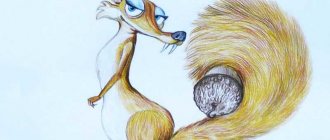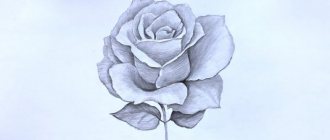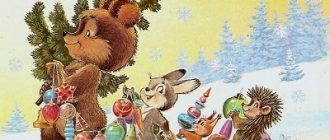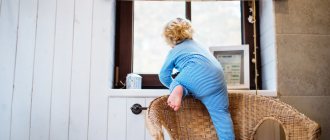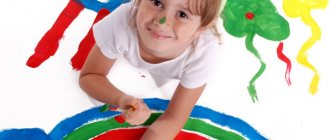On the topic: methodological developments, presentations and notes
The teacher introduces children to the human body and how to strengthen its muscles.
Goal: Fix the score within 7. Program content: 1. Fix the score within 7.2. Reinforce knowledge about the days of the week, their sequence and reciprocity.
Organized educational activities on physical culture in the air “Is your health okay? Thanks to the charger!”
Summary of entertainment in the senior group: exercises, competition games.
Objectives: To give children an idea that exercises vary in difficulty. At the beginning, you need to do easier exercises, and then proceed to more complex ones. Form a desire.
The event is intended for children of senior preschool age 6-7 years old. Goal: to introduce children to physical education and sports, and a healthy lifestyle. Objectives: To create a cheerful, joyful life.
Tasks. Teach children to monitor their health and take care of it. Fix the parts of the human body with children and expand children’s understanding of exercises for different parts of our body. Raise desire.
Source
Drawing on the theme “Be healthy!”
Municipal preschool educational institution "Kindergarten No. 148"
Summary of a drawing lesson in the senior group on the topic “Be healthy!”
Prepared by: 1st category teacher
Summary of a drawing lesson in the senior group on the topic “Be healthy!”
Goal:
Creating conditions for the development of creative abilities in the process of productive activity.
teach children to distinguish vitamin-containing foods;
Explain to children how vitamins affect the human body, their benefits and the importance of vitamins for human health;
develop attention, thinking, imagination, active and passive vocabulary;
instill in children a desire to take care of their health.
Preliminary work:
conversation with children about health;
preparing worksheets. Materials:
colored pencils, worksheets, sheets of drawing paper, boxes, jar, Pilyulkin doll.
Educator
- Guys, we received a letter from Dunno, listen to what he writes to us.
“Hello guys, my name is Dunno. I had a problem, I got sick. They say that in order not to get sick, you need to eat right. I tried, I ate only tasty things: cakes, sweets, and drank Pepsi Cola. But unfortunately, I'm getting worse and worse. Guys, please help me figure out what I need to eat so as not to get sick.”
- Guys, let's try to help Dunno.
Tell me, what do you like to eat most? (Children's answers)
What do you think is the difference between “tasty” and “healthy”? (Children's answers)
What healthy and what harmful products do you see in the picture? (Children's answers)
Guys, do you know that foods contain substances that are very important for human health, called vitamins? (Children's answers)
— Yes, vitamins have different effects on human health.
Vitamin A
is very important for vision and growth.
Vitamin B
promotes good heart function
- Of course, you shouldn’t completely give up sweets. However, it is necessary to eat a variety of foods in order to be strong, healthy and grow quickly.
Doctor Pilyulkin
- Oh, I mixed up all the vitamins!
Guys, I’m running to treat Dunno, help me put the vitamins into boxes. Children collect balls from the floor and sort them by color.
On the topic: methodological developments, presentations and notes
Plan of drawing notes (preparatory group) on the topic: “Winter Landscape” using the non-traditional “Imprint” technique (drawing with vegetables).
Goal: To consolidate children’s knowledge about wild animals; Objectives: Communicative and personal objectives: to activate vocabulary on the topic “Wild Animals”; learn to answer questions with complete answers.
Notes on drawing using non-traditional techniques.
Program content. Expand children's knowledge about the variety of mushrooms. Learn to draw mushrooms of different shapes, structures and colors. Practice drawing a forest clearing. Strengthen the ability to draw with paints and...
Program content: Learn to depict various types of transport, their shape, structure, proportions (ratio of parts by size), consolidate the ability to easily draw an outline with a simple pencil and fill.
Program content: Learn to depict various types of transport, their shape, structure, proportions (ratio of parts by size), consolidate the ability to easily draw an outline with a simple pencil and fill.
Program content: • To form in children an aesthetic vision of nature in works of fine art, to evoke an emotional response to the beauty of nature in winter.
Source
Summary of a drawing lesson for older children “Living Vitamins”
Oksana Telikova
Summary of a drawing lesson for older children “Living Vitamins”
Good day, friends and guests of my blog! On the topic of the week: “We want to be healthy!” I worked with children of the older group on drawing “Living Vitamins”
draw a fruit or vegetable, “revitalizing” it with the help of your face, arms, legs.
Tasks:
* Develop the ability to work on a plan, mentally imagine the contents of your drawing, and develop compositional skills.
* Develop creative imagination, the ability to convey the character of the object being drawn, achieving expressiveness with the help of color, dynamics, facial expressions, and additional details.
* Develop figurative memory, imagination, the ability to see the unusual in the ordinary.
Materials for the lesson:
Preliminary work:
reading Y. Tuvim “Vegetables”, watching the cartoon “Cipollino”, looking at illustrations of vegetables and fruits.
Preview:
Summary of visual activities in the preparatory group on the topic “Good and bad habits”
Goals: to teach children to distinguish between bad and good habits;
Objectives: to form a conscious refusal of bad habits;
Develop cognitive activity, creative imagination;
Cultivate an emotional attitude to translate your feelings into a drawing; instill in them a negative attitude towards all bad habits and a great desire to lead a healthy lifestyle.
Equipment: green and red cards for children, illustrations, markers, paper.
Educator: Hello, children! I am very glad to see you all so beautiful, joyful and healthy. I hope you are in a great mood. (Psychological attitude). Listen to the poem and think about what we will talk about.
About a girl who sucks her thumb.
Take your finger out of your mouth!
Girls and boys,
Don't suck your fingers.
Fingers are not candy.
Educator: Children, from these lines of the poem you could understand what will be discussed now. Yes, these are habits.
Educator: Every person is capable of getting used to certain actions and sensations. Some people are used to going to bed early, and others are used to going to bed late; Some people are used to doing exercises in the morning, while others are not. What appears in a person? That's right, habit. Today we will draw on the topic: “Bad and good habits.”
- What is a habit?
Children: This is an action that we repeat without even always noticing it. A habit is an action that becomes for us something we cannot live without.
— Guys, list the habits that you have or know?
Children: Coming from the street, change into house shoes, house clothes, wash hands with soap, wash, pick your nose, tell lies.
- Children, what are your habits?
Children: useful and harmful.
— What is a good habit?
Children: It is beneficial.
Educator: Useful, good habits make a person freer, since he stops thinking about many of his actions, they seem to be performed by themselves. Good habits help maintain health and make our lives easier. Let's think together and remember what other good habits are there? What are these habits? Let's look at illustrations of good habits.
Educator: But, unfortunately, there are also bad habits. What is a bad habit?
Children: This is a habit that is harmful.
Educator: Name bad habits.
Children: This is non-compliance with the daily routine, low mobility, smoking and other bad habits.
Educator: There are harmful, life-threatening habits, such as smoking, alcohol, drug addiction. These habits are destroying people's health. When smoking, the lungs turn black; cough, shortness of breath, and bronchitis appear. Alcohol dulls the ability to think clearly, impairs coordination of movements, and makes speech difficult. Look at the illustrations with bad habits.
Educator: Now we will try to sketch what we understand as bad and good habits. Think carefully about what can be depicted in your drawings so that we can come up with rules for a healthy lifestyle. Children draw, the teacher comes to help in conceiving the plot, in choosing means of representation, if necessary.
Children complete the drawings and the finished works are hung on the board, and the best ones are selected.
Educator: And now we will play the game “Helpful - Harmful.” I will name habits, and you, if it is a good habit, show a green card, a red card, if it is harmful.
Source
Summary of GCD on plasticineography in the middle group on the topic: Healthy lifestyle
Abstract of GCD on artistic and aesthetic development in the middle group on the topic “You need to know how to become healthy” with presentation
Topic. “You need to know how to become healthy.” Goal: To develop children's creative abilities through the use of an unconventional drawing technique - plasticineography. Objectives: - learn to convey the simplest image of objects through plasticineography; — teach the basic techniques of plasticineography (pinching, rolling, pressing)
;
— learn to work in a given space; - develop accuracy and fine motor skills; - cultivate independence, aesthetic feelings, interest in creative work. Modeling techniques: - pinching, pressing; - smearing with a finger over the entire drawing; - do not go beyond the outline of the object; - use a glass or napkin. Material: - plasticine of different colors; — transparent film with a printed outline of sports items according to the number of children; - board for plasticine; - stacks, napkins for hands, board - substrate for working with plasticine; - cold doll; — ribbed board (bridge)
;
— a screen for designing and analyzing work; — presentation in Pover Point; - musical fragments. Previous work: • reading fairy tales: L. Shchepacheva.
“How the little bear Shunya sought health,” Iris Review. Fairy tale “About smart health”; • solving riddles; • finger games: “Here are my helpers”, “We sculpted for a long, long time”; • physical education, “Give us some warmth, sunshine,” “Stretch”; • drawing of sports objects, modeling of sports objects; • sports games with a ball, hoop, skipping ropes, ribbons; • examination of illustrations of sports items and various sports. Progress of GCD
Organizational moment. The teacher organizes joint play activities in the sedentary game “Walk through - don’t hit”; "Pass the ball." Psychological mood. Slide No. 2 (March)
.
(Children in sportswear enter the group to the music)
.
Physical education lesson (Children follow the teacher one after another)
.
Educator: We start doing exercises in the morning, so that we less often turn to doctors for advice. (Form a circle, perform movements according to the text)
All the guys got up early, Marching like soldiers, Hands up, hands down, Rise up on your toes!
Get up one more time! Smile at everyone, my friend! They raised their palms up and said “Hello”! (They say hello)
.
Educator: - Guys, why are you doing exercises? (to be healthy, vigorous)
.
How do you feel after exercise? (cheerful, cheerful)
Let's keep our good mood for the whole day and share it with our friends.
(They go to the tables and sit on the chairs that have been pushed back) The main part. Slide 3. (Sound of a child sneezing) Educator: - Is someone sneezing? Maybe one of you is sick? (No)
I’ll look behind the screen, maybe someone is sneezing behind it
(I take out a doll wrapped in a scarf from behind the screen)
.
Children: - This is a cold doll. Educator: - Let's say hello to the Cold (we say hello) Children: - The Cold is sick again. Educator: - Children, did you treat your cold? How? (They gave tea with honey, lemon, put on mustard plasters, gave medicines...)
Medicines do not help colds.
How can we help her recover? You know? (She needs to do gymnastics, physical education, sports)
.
Right! That's why the Cold turned to you for help: it doesn't know what sports equipment is needed to play sports. Do you know sports items? (Yes)
Can you show them to her and tell her how they are played with?
(Yes)
Let's show her our sports album.
Slides from No. 5-No. 9.
1. Children play volleyball.
To play volleyball you need a volleyball. This ball is hit by hand. 2. A soccer ball is needed to play soccer. This ball is kicked. 3. Children can do gymnastics with dumbbells and a hoop. 4. For gymnastics, you can take a skipping rope. 5. You can perform gymnastics with gymnastic ribbons. Educator: - Oh, children, so many sports items! How will the Cold remember them all? Let's draw pictures of sports items for her and give them as gifts, and at home Cold will choose something from them for herself. (Agree)
Move the chairs to the table.
Sit closer. — Look and tell me, what material will you use to draw sports objects? (Plasticine)
That's right, but what you see is not ordinary plasticine, but magical one.
And you will draw with magic plasticine on magic transparent film! The outline of your future sports item has already been applied to the film; it needs to be painted over with plasticine using the smearing method. See what sports items you will paint with plasticine? (Stencils are laid out on the tables) (Children have chosen a sports object in advance, the outline of the sports object is drawn on the film. They look at the outline on the plastic square. Exchange impressions)
.
Educator: - Do you remember how to create a picture using the smearing method? (Child tells)
.
Christina, come, show me how you will “draw” with plasticine on a stencil between the contour lines? (He says: “I tear off a small piece of plasticine from a large one and begin to smear it on the stencil between the contour”)
.
Well done! - Why do you need a stack? (we will erase the plasticine with a stack if we go beyond the outline of the object)
.
— Why do you need a napkin? (at the end of the work, we will wipe off the excess plasticine from the film and dry our hands)
.
-Right. Well done. The cold is so eager to see pictures of sports items. — Before we begin, let's stretch our fingers to make it easier for them to work with plasticine. Stand on your feet near the table. Finger warm-up (standing at the table)
Here are my assistants
(pointing and looking at open palms)
, turn them the way you want.
And like this, and like this (turn their hands up, palms up, then down)
, They won’t be offended in any way
(rub their palms together)
.
One, two, three, four, five (bend their fingers, starting with the little finger)
They don’t sit well again
(clap their hands)
.
They knocked (with their fists on their knees)
, turned them
(twirled their fists)
and wanted to work
(rubbed their hands)
.
(Sit down)
- Take plasticine of any color you like.
(Choose)
.
Separate a small piece from it. Place plasticine between the contour lines and start smearing. Educator: (Children do the work independently. I help with advice, guiding questions, individual demonstration of modeling methods. I remind them of the time when they need to finish “drawing”)
.
- You guys are so great, it turns out so beautifully. Cold says she can't wait to see what sports items you drew for her. Whoever has already drawn, let's place them on the board so everyone can see. (Children bring it.)
Final part.
(Children stand with the teacher near the board)
.
Physical school While we were drawing (the actions in question are being carried out)
, our eyes are so tired.
We will let them rest, We will close them for a little while. Now let’s open them and blink a little. (Pay attention to the board with drawings)
.
Educator: - Oh, what bright pictures! Can you tell us who and what of you drew for Cold?! (list)
What beautiful balls, jump ropes...!
The cold says that she wanted to pick them up and play. Guys, can you play with these items in a group? (Outside, in the fresh air)
That's right.
Let's invite Cold to go for a walk, where she will play sports games with you. We will put your drawings in an album and give it to her. Let's remind the Cold why you need to exercise? (to always be healthy)
.
Reflection. Educator: - Guys, look at your hands after “drawing.” Do you see the remains of magic plasticine on them? Do you know how to remove plasticine from your hands? (You need to wash your hands)
And cleanliness is also a guarantee of health.
Wash your hands, I will lead you to the source of health. Get up one after another, we will go to the water through the stream along this bridge (ribbed board)
.
(Children go to wash their hands after the teacher)
.
Presentation on the topic: You need to know how to become healthy
We recommend watching:
Notes for a lesson in the middle group on the works of Marshak Notes for a lesson in kindergarten on cognitive development with children in the middle group “Journey of the Foxes” Notes for a lesson on cognitive development in the middle group “In Search of Treasures” Notes for a lesson in the middle group. History of the book
Similar articles:
Summary of a lesson in kindergarten in the middle group “What I love”
Math lesson “Rectangle” in the middle group of kindergarten
